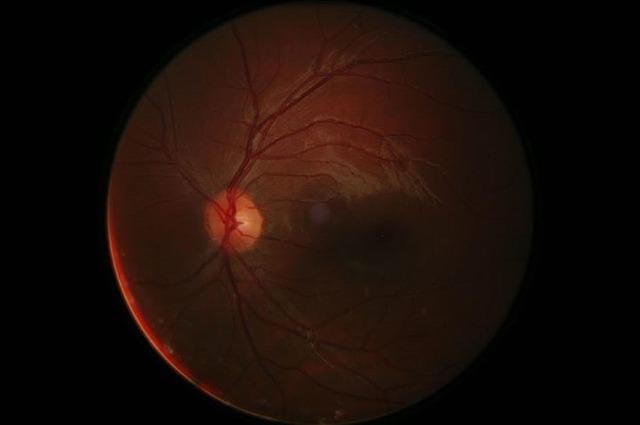
Most of us received an eye exam at some point in our life. Whether at a school nurse's office or in a medical setting, this was an introduction into the importance of long-term eye health but has often centered around the need for glasses to correct blurry vision. However, the world of ophthalmology extends far beyond basic vision exams and vision correction. Los Angeles' leading Ophthalmologist, Dr. Tom S. Chang MD, touts the expansive realm of care associated with ophthalmology and ocular health. As the founder of a multi-site ophthalmology and retina group, Acuity Eye Group, Tom S. Chang MD, and his team dedicate their time and energy to patient education, early intervention of eye disease, and a range of treatments and services to prevent or slow debilitating vision loss. From maintaining long-term ocular wellness to participating in groundbreaking research for degenerative eye disorders, Dr. Tom S. Chang MD and his team have led the way in the world of ophthalmology.
History Of Ophthalmology
Though the exact origins of eye care remain somewhat debatable, early written accounts of eye examinations exist. These rudimentary notes about examinations and speculations were mostly physical and relied on visual clues for assessment. In 800 BC, the first ocular surgeries were recorded and attributed to Sushruta, an early surgeon of Indian descent. According to Sushruta, there were 76 observed ocular diseases. Though ancient times boasted very little knowledge of physiology and anatomy, these revelations were astounding and highly astute for the time and context of their occurrence. According to modern eye health experts, like Tom S. Chang MD, the history of ophthalmology showcases an impressive journey toward discovery, innovation, and care for humankind.
Rudimentary knowledge about the makeup of the eye was gained through dissection. Notably, Aristotle dissected the eyes of various animals. Through this practice, he discovered that the eyes were made up of three distinct layers. He introduced the idea of empiricism, wherein experiences and knowledge are born from sensory experiences. Aristotle's growing insight about the anatomy and physiology of the eye became a cornerstone of this theory.
Adding to Aristotle's observations, Rufus of Ephesus contended that there was a fourth layer to the eye. He surmised the presence of an epithelial layer that covers the eye, acting as a protective barrier against intrusive forces. In addition to this discovery, Rufus of Ephesus is touted as discovering the two chambers of the eye. Other founding fathers of ancient ophthalmology include Galen and Vesalius, who both discovered additional functions and anatomical parts of the eye.
In the Middle Ages, early microscopes and hand lenses were introduced to propel the advancement of physical examination. During this time, early treatments for cataracts were implemented, and Baron Michael Johann Baptist de Wenzel was recognized for his ability to successfully remove cataracts. Dr. Tom S. Chang MD touts this as a major turning point in the history of eye care, as cataracts impact daily life, and the condition and treatment remains widely relevant to this day. In 1851, the first ophthalmoscope was invented, bringing the age of ocular exploration to new heights.
After the ophthalmoscope was created, ocular diseases were able to be readily identified, and new treatment options were discovered with increasing frequency. Operations required to treat glaucoma were refined and various other conditions like diabetic retinopathy and macular degeneration became treatable. During modern ophthalmological growth, subspecialties began to take shape. As more specialists began to focus on particular disciplines of ocular care, these subspecialties were welcomed. Bespoke eye care hospitals became widely recognized across the world as leading centers for discovery, care, and innovation.

Tom S. Chang MD on Retina Diseases
One of the most profound subspecialties in the realm of ophthalmology lies in the treatment of retina disease. Tom S. Chang MD's Acuity Eye Group boasts the Western United States' largest privately-owned retina group. Within this setting, innovation can occur, spearheading positive patient outcomes. Due to the vast importance of the retina, this subspecialty is an integral portion of complete ocular care.
The retina is located at the back of the eye and contains light-sensitive rods and cones that are responsible for interpreting vision. Essentially, when individuals look at any object, the frontal lens projects the image onto the retina. From there, the rods and cones are responsible for sending electrical signals along the optic nerve and into the brain. Based on these signals, the brain works to determine what the individual is actually seeing.
When any malfunctions within this delicate process occur, vision can be impaired. Malfunctions can be caused by receiving physical trauma to the retina or as a result of numerous other conditions that can impact how the retina is performing. These conditions can include macular degeneration, tears in the retina, or diabetic retinopathy to name a few. If these medical conditions are left untreated, they can lead to permanent vision loss. Thus, Tom S. Chang MD notes that a comprehensive exam that includes a check of the retina is integral to maintaining vision health.
Retina doctors are specialists and, thus, best prepared to diagnose and treat conditions involving the retina. Their approach can provide proactive treatment, patient advocacy, and awareness strategies to prolong overall wellness. When vision correction cannot be improved with appropriate prescription, and degeneration of vision cannot be attributed to normal conditions, or if an abnormality of the retina is identified during a comprehensive exam, the patients will be referred to the retina doctor to provide advanced testing to determine the cause of the concern.
Combining traditional methodology and tech-based instruments, retina doctors will often examine the eye with a classic ophthalmoscope, or retinal imaging technology. A retinal scan may also be done. Within the scope of a retinal scan, images are taken of the retina, optic disc, and blood vessels. This provides a comprehensive look at the area in question and allows retina doctors to examine the health of the particular area.
Retina doctors are highly trained in the treatment of conditions affecting the retina, macula, and vitreous. These conditions include vitreous hemorrhage, retinal vein occlusion, macular pucker, macular edema, diabetic retinopathy, and macular degeneration..
Tom S. Chang MD on Oculoplastics
Another emerging subspecialty in the realm of ophthalmology is oculoplastics. Oculoplastics deals with reconstructive and plastic surgery focused on the eye area. This can include the areas around the eyelids, tear ducts, and orbital bones. While many oculoplastic procedures are done out of medical necessity, they can also be cosmetic in nature.
While the realm of oculoplastics is certainly expanding, many oculoplastics procedures center around the treatment for ptosis. Also known as droopy eyelids, ptosis often occurs as a result of aging. It can also be because of a malformation of the eyelids or from trauma to the eye area. Though the condition can be harmless, excessive drooping of eyelids can physically impact vision. The surgical intervention for ptosis is called blepharoplasty. During this procedure the oculoplastic surgeon will trim away excessive eyelid skin. This procedure typically improves vision and can give patients a more youthful look as well.
Oculoplastic surgeons often provide treatment for blocked tear ducts as well. This condition can lead to excessive tearing and discomfort. During the procedure, the surgeon removes the blockages and restores normal tear activity, alleviating all symptoms associated with blocked tear ducts.
Oculoplastic surgeons can perform a variety of procedures beyond blepharoplasty and blocked tear ducts. These include orbital fractures, which require specialized attention to regain appropriate physical restructuring and the removal of tumors or skin cancer around the eye area.

Leading in Technology and Ophthalmology with Tom S. Chang MD
The area of ophthalmology has grown and expanded as a direct result of technological advancement, innovation, and research. Ophthalmology started by exploring the anatomy of the eye. Through the development of technology, the field welcomed groundbreaking tools that provide unprecedented access to the innermost portions of the eye. Technology has been instrumental in advancing research, developing diagnostic measures, and delivering viable treatment options to previously incurable conditions. Advancements in technology have empowered ophthalmologists to provide comprehensive services that have undoubtedly impacted the lives of countless patients.
Ophthalmological surgery has also benefited greatly from technological advancements. Eye surgeries were historically done by hand, with the use of hand-held tools, and rudimentary assistive methods. Over the years, various innovative lasers, robotic tools, and scanners have aided eye surgeons in perfecting their craft. With enhanced precision and stability, these tools are extremely helpful in maximizing positive patient outcomes. While some may oppose what they see as an increased reliance on technology, industry leaders like Dr. Tom S. Chang MD welcome the assistive nature of groundbreaking technology.
For example, the Femtosecond laser is applied throughout many ocular surgeries. During cataract-removal surgery, this precise laser creates a standardized method of accurately performing lens fragmentation. Throughout the popular LASIK vision correction surgery, the Femtosecond laser has perfected the creation of flaps. For corneal grafts, the laser perfects corneal incisions. Though the technology behind this breakthrough laser is complicated, it essentially splits tissue perfectly without affecting other areas. Increased accuracy and precision allow the laser to perform its functions and reduce the chance of human error.
For the countless patients navigating degenerative vision loss as a result of advanced macular degeneration, advances in technology have allowed these patients to enjoy enhanced and prolonged vision. Ultimately, total vision loss can be expected from advanced stage degenerative ocular diseases. Before the advancement of technology, this expectation would have been somewhat of a life sentence for those affected. Now, as breakthrough technology continues to prolong disease progression and enhance vision capabilities, degeneration doesn't necessarily have to result in swift and total blindness.
The Future Of Ophthalmology
Since early recorded history, humankind has been examining the eyes and searching for a deeper understanding of the various conditions that impact vision. The medical discipline began with the rudimentary exploration of physical characteristics, wherein ancient ophthalmologists sought to gain insight via physical examination. From there, advancements in science and medicine allowed for further understanding of the role of various parts of the eye, and how they worked together.
As the general field of eye care expanded, ophthalmologists found themselves able to dedicate their professional and academic lives to specialty disciplines within the field. This specialized growth led to better outcomes for patients, as specialists focused on forwarding research studies, developing treatments, and gaining a comprehensive understanding of various specialized facets of ophthalmological care.
Combining technology with medicine, the current state of ophthalmology remains at an exciting precipice. As AI and assistive technology continue to expand, effective and unprecedented treatment options become available. Diseases that were previously thought to be incurable receive effective care options and patient outcomes become enhanced. With so much progress already accomplished, it remains safe to say that the next generations will enjoy further advancement, innovation, and positive change in the realm of ophthalmology. For committed leaders like Tom S. Chang MD, changing patients' lives is the cornerstone of ophthalmology and continues to drive the field forward.
* This is a contributed article and this content does not necessarily represent the views of techtimes.com









